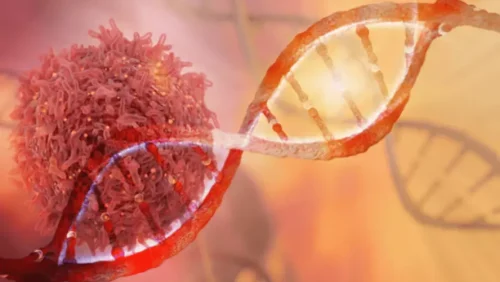What are the signs and symptoms of diabetic ketoacidosis?

Anyone thinking about trying a keto diet should speak with a doctor first. It is not safe for everyone, including those with liver failure, pancreatitis, alcoholic ketoacidosis smell and individuals already living with high cholesterol. Neurologically, patients are often agitated but may occasionally present lethargic on examination.
Possible Complications
Typical characteristics of the latter may include rhinophyma, tremulousness, hepatosplenomegaly, peripheral neuropathy, gynecomastia, testicular atrophy, and palmar erythema. The patient might be tachycardic, tachypneic, profoundly orthostatic, or frankly hypotensive as a result of dehydration from decreased oral intake, diaphoresis, and vomiting. Alcoholic ketoacidosis most commonly happens in people who have alcohol use disorder and chronically drink a lot of alcohol. But it can happen after an episode of binge drinking in people who do not chronically abuse alcohol. Alcoholic ketoacidosis doesn’t occur more often in any particular race or sex.

Consensus Recommendations on the Treatment of Opioid Use Disorder in the Emergency Department

Following resuscitation, our patient had plasma electrolyte levels corrected, nutritional supplementation provided and completed an alcohol detoxification regimen. Given the early recognition of AKA and concurrent management, our patient had a good outcome. She was discharged home and has been well on follow-up appointments. Further biochemical investigation after treatment showed a rapid decline in the level of ketones and normalization of pH. If you’re intentionally fasting or following a ketogenic diet, you should expect fruity breath. You can drink plenty of water, brush your teeth more often, or use mints or gum to try to mask it.
Create a file for external citation management software
- However, the long-term prognosis depends on the severity of the underlying alcohol abuse disorder.
- It often occurs during periods of poor oral intake and includes symptoms such as nausea and vomiting, abdominal pain, and dehydration source.
- When diagnosing alcoholic ketoacidosis, it’s crucial to consider potential alternative explanations for a patient’s symptoms.
- During DKA, the lack of insulin results in the liver using fat for fuel instead, which produces acids called ketones.
When your body can’t get energy from glucose, it burns fat in its place. The fat-burning process creates a buildup of acids in your blood called ketones, which leads to DKA if untreated. Fruity-smelling breath is a sign of high levels of ketones in someone who already has diabetes.
Practice Essentials
For example, breath that has a fruity or acetone-like scent may be a sign of ketosis from your diet, excessive alcohol intake, or liver disease. As this happens, the liver releases ketones, including acetone, as byproducts. If a person’s breath smells like acetone — or nail polish remover — it may indicate that there are high levels of ketones in their blood. Triglycerides stored in adipose tissue undergo lipolysis and are released into the circulation as free fatty acids bound ionically to albumin. Free fatty acids are removed by the liver, where they primarily undergo oxidation to hydroxybutyric acid and acetoacetate and subsequently are reesterified to triglyceride. Decreased insulin and elevated glucagon, cortisol, catecholamine, and growth hormone levels can increase the rate of ketogenesis.

This drop in blood sugar causes your body to decrease the amount of insulin it produces. Your cells need insulin to use the glucose in your blood for energy. If they can’t use glucose because there’s not enough insulin, your body switches to another method to get energy — breaking down fat cells. Patients are usually tachycardic, dehydrated, tachypneic, present with abdominal pain, and are often agitated. If you are diagnosed with alcoholic ketoacidosis, your recovery will depend on a number of factors. Seeking help as soon as symptoms arise reduces your chances of serious complications.

It happens when the body breaks down fats for energy, which produces ketones. Early symptoms of DKA can include increased thirst and urination. Other symptoms include fatigue, nausea, and a fruity odor on the breath. The key differential diagnosis to consider, and exclude, in these patients is DKA. First and foremost, initial stabilization is vital, as it helps to manage the symptoms and complications of alcoholic ketoacidosis. The primary goal is to restore your body’s electrolyte levels, such as potassium, magnesium, and phosphorus.
- Diabetic ketoacidosis is treated with fluids, electrolytes — such as sodium, potassium and chloride — and insulin.
- Alcoholic ketoacidosis (AKA) is a condition seen commonly in patients with alcohol use disorder or after a bout of heavy drinking.
- This vitamin supports the transformation of carbohydrates into energy, which is essential during the recovery process.
- A distinct feature of AKA is the fruity smell of the breath due to a build-up of ketones in the body.
- If your breath smells like acetone — the same fruity scent as nail polish remover — it may be a sign of high levels of ketones (acids your liver makes) in your blood.
- If you experience fruity breath that’s not caused by intentional changes to your diet, the scent of your breath may have more dire causes.
- Not eating enough or vomiting can lead to periods of starvation.
It is essential to differentiate AKA from DKA to ensure that inappropriate insulin administration does not occur. The key tenants to management of AKA include fluid resuscitation and electrolyte correction. One of the health problems related to alcohol abuse is pancreatitis, which is inflammation of the pancreas. Pancreatitis can disrupt the normal functioning of your digestive system and contribute to the development of alcoholic ketoacidosis. Alcoholic ketoacidosis (AKA) is a condition seen commonly in patients with alcohol use disorder or after a bout of heavy drinking. It is a clinical diagnosis with patients presenting with tachycardia, tachypnea, dehydration, agitation, and abdominal pain.
- Alcohol dehydrogenase (ADH), a cytosolic enzyme, metabolizes alcohol to acetaldehyde in hepatocytes.
- If a person follows a ketogenic diet to lose weight, they may have a slight smell of acetone on their breath.
- After these test results are in, they can confirm the diagnosis.
- The key tenants to management of AKA include fluid resuscitation and electrolyte correction.
- Your doctor may also admit you to the intensive care unit (ICU) if you require ongoing care.














